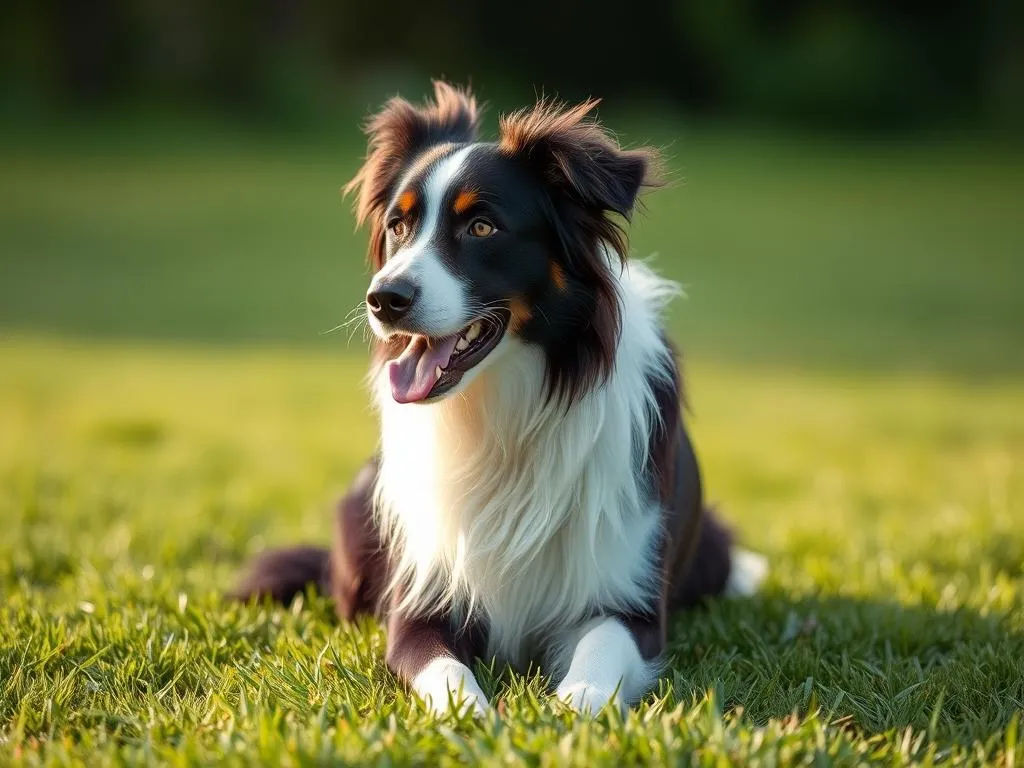
Introduction
Dog breeds play a crucial role in the world of canine companionship, each serving unique purposes that often reflect their historical origins. Understanding the history and breeding purpose of various breeds is essential for potential owners, as it helps them select a dog that aligns with their lifestyle and needs. This article will particularly focus on what were Border Collies bred for, delving deep into their heritage, physical traits, temperament, and modern-day roles. Readers can expect to gain a comprehensive understanding of Border Collies, including how their breeding has shaped their behavior and the considerations for owning one.
The Concept of Dog Breeds
Definition of Dog Breeds
A dog breed is defined by a set of characteristics that distinguish it from other breeds. These characteristics can include size, temperament, and specific purposes for which the breed was developed. For instance, working breeds like the German Shepherd are known for their intelligence and trainability, while toy breeds like the Chihuahua are often valued for their small size and companionship.
The Evolution of Dog Breeds
The domestication of dogs began thousands of years ago, evolving from wild wolves into the beloved companions and working animals we know today. Various factors, including geographical location, climate, and human needs, influenced the development of distinct breeds. In particular, the need for herding, hunting, and guarding led to the emergence of specialized breeds tailored to perform specific tasks.
The Importance of Breed Knowledge
Understanding dog breeds is vital for responsible ownership. Knowledge about a breed’s history and purpose helps potential owners make informed decisions about which breed will best fit their lifestyle. Moreover, it plays a significant role in promoting responsible breeding practices, ensuring that dogs are bred for health and temperament rather than merely for appearance.
Overview of Border Collies
History of Border Collies
Border Collies originated in the border regions of England and Scotland, with their roots tracing back several centuries. They were specifically developed for herding sheep, showcasing remarkable intelligence, agility, and work ethic. The breed’s name derives from the “Borders” of England and Scotland, where these dogs were primarily utilized by shepherds to manage livestock efficiently.
Physical Characteristics
Border Collies are medium-sized dogs, typically weighing between 30 to 45 pounds. They boast a variety of coat types, including smooth and rough, with colors ranging from black and white to merle and tri-color. One of their most distinctive features is their intense gaze, often referred to as “the eye,” which they use to control and direct livestock.
Temperament and Behavior
Known for their high intelligence and energy, Border Collies are exceptionally trainable. They thrive on mental and physical stimulation, making them an ideal choice for active owners. Their personality is typically described as eager, alert, and friendly, though they can also exhibit a reserved demeanor around strangers. Because of their herding instincts, they may try to herd children or other pets if not properly trained.
What Were Border Collies Bred For?
Herding Instincts
One of the most fascinating aspects of what were Border Collies bred for is their innate herding instincts. These dogs exhibit a natural ability to gather and direct livestock, especially sheep. Their herding behavior often includes crouching low to the ground and using their gaze to control the movement of the flock. This instinctual behavior is deeply embedded in their genetics, making them one of the most proficient herding breeds in existence.
Working Traits
Border Collies possess a unique combination of skills that make them exceptional working dogs. Their intelligence allows them to learn commands quickly, while their agility enables them to navigate various terrains with ease. Their trainability is unparalleled, often leading to their success in competitive obedience and agility events. This high level of obedience and responsiveness is a direct result of their breeding for specific working roles.
Modern Uses of Border Collies
While Border Collies were primarily bred for herding, their skills have transitioned into various modern roles. Today, they are often seen in agility competitions, search and rescue operations, and even as therapy dogs. Their intelligence and versatility allow them to excel in these roles, showcasing the adaptability of a breed originally designed for herding.
Training and Care for Border Collies
Training Techniques
Training a Border Collie requires a firm yet positive approach. Methods such as clicker training, positive reinforcement, and consistent commands yield the best results. Given their high intelligence, these dogs thrive on mental challenges, making puzzle toys and interactive games excellent training tools. Regular training sessions not only reinforce good behavior but also help in channeling their energy productively.
Exercise Requirements
Border Collies have significant exercise needs that must be met to keep them happy and healthy. Daily walks, runs, and play sessions are essential, as these dogs require both physical and mental stimulation. Engaging activities like herding trials, agility courses, and obedience training can help satisfy their instinctual needs and prevent behavioral issues that arise from boredom.
Health and Nutrition
Like all breeds, Border Collies are susceptible to certain health issues, including hip dysplasia, eye disorders, and epilepsy. Regular veterinary check-ups and a balanced diet tailored to their specific needs are critical for maintaining their health. High-quality dog food that provides essential nutrients will support their active lifestyle, ensuring they remain fit and energetic.
Choosing the Right Dog Breed for You
Assessing Lifestyle Compatibility
Before selecting a breed, it’s essential to assess your lifestyle. Considerations such as activity level, living situation, and time availability for training and socialization are crucial. Border Collies require an active environment and a dedicated owner who can provide the necessary stimulation and exercise.
Adoption vs. Breeding
Deciding whether to adopt a dog or purchase from a breeder involves weighing the pros and cons. Adoption can provide a loving home to a dog in need, while purchasing from a breeder allows for more predictability in temperament and health. Whichever path you choose, it’s vital to support responsible breeding practices to ensure the well-being of the dogs.
Other Dog Breeds with Similar Traits
If a Border Collie seems like a good match but you’re open to exploring other options, several breeds share similar traits. Breeds like the Australian Shepherd, Belgian Malinois, and Shetland Sheepdog also exhibit strong herding instincts, high intelligence, and energetic personalities. Comparing their characteristics can help you find the ideal canine companion.
Conclusion
In summary, understanding dog breeds, particularly Border Collies, sheds light on their unique traits, instincts, and purposes. From their historical roots as exceptional herders to their modern-day roles in various fields, Border Collies showcase the incredible diversity within dog breeds. Recognizing the significance of breed characteristics is essential for potential owners, ensuring they choose a pet that will fit seamlessly into their lives. With the right knowledge and commitment, a Border Collie can be a loyal and fulfilling companion for many years to come.









